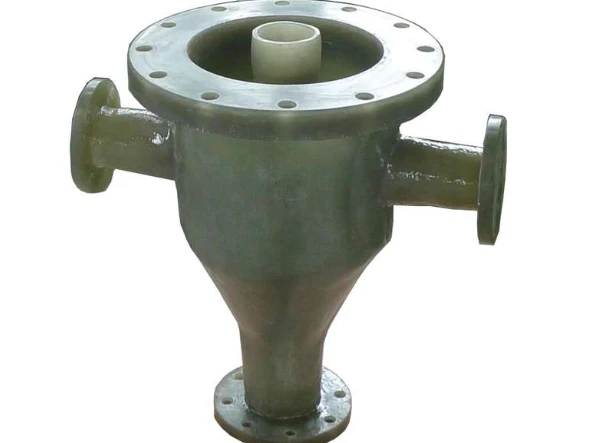
-
 Afrikaans
Afrikaans -
 Albanian
Albanian -
 Amharic
Amharic -
 Arabic
Arabic -
 Armenian
Armenian -
 Azerbaijani
Azerbaijani -
 Basque
Basque -
 Belarusian
Belarusian -
 Bengali
Bengali -
 Bosnian
Bosnian -
 Bulgarian
Bulgarian -
 Catalan
Catalan -
 Cebuano
Cebuano -
 China
China -
 China (Taiwan)
China (Taiwan) -
 Corsican
Corsican -
 Croatian
Croatian -
 Czech
Czech -
 Danish
Danish -
 Dutch
Dutch -
 English
English -
 Esperanto
Esperanto -
 Estonian
Estonian -
 Finnish
Finnish -
 French
French -
 Frisian
Frisian -
 Galician
Galician -
 Georgian
Georgian -
 German
German -
 Greek
Greek -
 Gujarati
Gujarati -
 Haitian Creole
Haitian Creole -
 hausa
hausa -
 hawaiian
hawaiian -
 Hebrew
Hebrew -
 Hindi
Hindi -
 Miao
Miao -
 Hungarian
Hungarian -
 Icelandic
Icelandic -
 igbo
igbo -
 Indonesian
Indonesian -
 irish
irish -
 Italian
Italian -
 Japanese
Japanese -
 Javanese
Javanese -
 Kannada
Kannada -
 kazakh
kazakh -
 Khmer
Khmer -
 Rwandese
Rwandese -
 Korean
Korean -
 Kurdish
Kurdish -
 Kyrgyz
Kyrgyz -
 Lao
Lao -
 Latin
Latin -
 Latvian
Latvian -
 Lithuanian
Lithuanian -
 Luxembourgish
Luxembourgish -
 Macedonian
Macedonian -
 Malgashi
Malgashi -
 Malay
Malay -
 Malayalam
Malayalam -
 Maltese
Maltese -
 Maori
Maori -
 Marathi
Marathi -
 Mongolian
Mongolian -
 Myanmar
Myanmar -
 Nepali
Nepali -
 Norwegian
Norwegian -
 Norwegian
Norwegian -
 Occitan
Occitan -
 Pashto
Pashto -
 Persian
Persian -
 Polish
Polish -
 Portuguese
Portuguese -
 Punjabi
Punjabi -
 Romanian
Romanian -
 Russian
Russian -
 Samoan
Samoan -
 Scottish Gaelic
Scottish Gaelic -
 Serbian
Serbian -
 Sesotho
Sesotho -
 Shona
Shona -
 Sindhi
Sindhi -
 Sinhala
Sinhala -
 Slovak
Slovak -
 Slovenian
Slovenian -
 Somali
Somali -
 Spanish
Spanish -
 Sundanese
Sundanese -
 Swahili
Swahili -
 Swedish
Swedish -
 Tagalog
Tagalog -
 Tajik
Tajik -
 Tamil
Tamil -
 Tatar
Tatar -
 Telugu
Telugu -
 Thai
Thai -
 Turkish
Turkish -
 Turkmen
Turkmen -
 Ukrainian
Ukrainian -
 Urdu
Urdu -
 Uighur
Uighur -
 Uzbek
Uzbek -
 Vietnamese
Vietnamese -
 Welsh
Welsh -
 Bantu
Bantu -
 Yiddish
Yiddish -
 Yoruba
Yoruba -
 Zulu
Zulu
Jan . 20, 2025 12:59
Back to list
Clarifiers & Settlers
In the ever-evolving landscape of construction and architecture, innovation is at the forefront, leading to the exploration of new materials that promise longevity, durability, and cost-effectiveness. One such material that has taken the industry by storm is FRP (Fiber Reinforced Plastic) used in housing. This article delves deep into the nuances of FRP housing, drawing from real experience, professional expertise, and authoritative insights to paint a comprehensive picture of this revolutionary development in modern architecture.
Trustworthiness in FRP housing stems from its eco-friendly profile. As sustainability becomes a pivotal consideration in construction, FRP offers a lighter environmental footprint. Its production requires less energy compared to traditional materials, and the resultant buildings are energy-efficient due to FRP's excellent thermal properties. Moreover, innovations in recycling technology are making it possible to repurpose FRP at the end of its lifecycle, addressing concerns about long-term environmental impacts. However, transitioning to FRP housing is not without its challenges. The initial costs may be higher compared to traditional materials. Still, long-term analysis shows substantial savings in maintenance and energy. For instance, FRP structures require fewer repairs, are less prone to decay, and insulate better, leading to lower heating and cooling costs. Financial audits of FRP housing projects substantiate these savings, proving their economic viability in the long-term. In terms of market adoption, industries and sectors beyond residential housing are recognizing the utility of FRP. Commercial enterprises, educational facilities, and even healthcare infrastructures are exploring FRP's potential. The weight-to-strength ratio makes it a favorite in projects where load reduction and efficiency are critical. For construction professionals eager to stay at the forefront of technology, embracing FRP is becoming a mark of innovation and forward-thinking. In conclusion, FRP housing represents a transformative shift in how we approach construction. It embodies the principles of modern architecture aligned with the demands of today's environmental, economic, and societal contexts. With continued research and advancements, FRP's role is set to grow, promising safer, more durable, and sustainable housing solutions. As testimonials from satisfied users and endorsements from industry leaders increase, FRP housing stands on the brink of becoming a staple in modern construction methodologies, offering a reliable and innovative alternative to conventional building materials.


Trustworthiness in FRP housing stems from its eco-friendly profile. As sustainability becomes a pivotal consideration in construction, FRP offers a lighter environmental footprint. Its production requires less energy compared to traditional materials, and the resultant buildings are energy-efficient due to FRP's excellent thermal properties. Moreover, innovations in recycling technology are making it possible to repurpose FRP at the end of its lifecycle, addressing concerns about long-term environmental impacts. However, transitioning to FRP housing is not without its challenges. The initial costs may be higher compared to traditional materials. Still, long-term analysis shows substantial savings in maintenance and energy. For instance, FRP structures require fewer repairs, are less prone to decay, and insulate better, leading to lower heating and cooling costs. Financial audits of FRP housing projects substantiate these savings, proving their economic viability in the long-term. In terms of market adoption, industries and sectors beyond residential housing are recognizing the utility of FRP. Commercial enterprises, educational facilities, and even healthcare infrastructures are exploring FRP's potential. The weight-to-strength ratio makes it a favorite in projects where load reduction and efficiency are critical. For construction professionals eager to stay at the forefront of technology, embracing FRP is becoming a mark of innovation and forward-thinking. In conclusion, FRP housing represents a transformative shift in how we approach construction. It embodies the principles of modern architecture aligned with the demands of today's environmental, economic, and societal contexts. With continued research and advancements, FRP's role is set to grow, promising safer, more durable, and sustainable housing solutions. As testimonials from satisfied users and endorsements from industry leaders increase, FRP housing stands on the brink of becoming a staple in modern construction methodologies, offering a reliable and innovative alternative to conventional building materials.
Next:
Related Products









